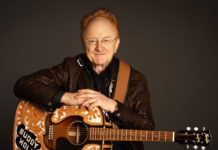Sometimes, due to the nature of an issue or a limited amount of time in which to make a decision, we are unable to seek input from our community. As we continue our efforts to improve achievement for all students, we are also committed to building a school district that better meets the needs of our community. To this end, the Morgan Hill Unified School District conducted a community survey last month to ascertain levels of interest in alternative grade configurations and program variation while generating new, innovative ideas. The survey results have been tallied so it is time to share the data.
The Morgan Hill Unified School District conducted a “School Interest Survey” from March 1 through March 16. The survey was available online in English and in Spanish. Hard copies of the survey were also available at each school site and at the district office for stakeholders without access to the Internet-hard copies were also in English and Spanish. During the two week survey window, 687 stakeholders took at least part of the survey-of which 80 percent were parents. The survey asked background questions as well as questions about school focus, school programs and characteristics, magnet programs/schools, and grade level configurations. There were also a variety of open ended questions that allowed stakeholders to share their ideas or provide feedback.
When asked about areas of focus, stakeholders had a range to consider from technology rich instruction to back-to-basics instruction. Stakeholders rated “Reading and math across the curriculum” highest at an average rating of 8.74 out of 10. The second highest rated area of focus was “Technology integrated into curriculum and instruction” with an average rating of 8.40. The lowest rated area of focus was “Back-to-basics instruction” at 5.71 out of 10.
Stakeholders were asked which programs or school characteristics were of most interest to them. “Arts embedded in the curriculum” was the highest rated characteristic at an average rating of 8.38 out of 10. “After-school interest based activities” was second at 8.08. With an average rating of 6.15, “Wrap around services-counseling, mental health, social services, etc” was the lowest rated characteristic.
Stakeholders were also asked about levels of interest for magnet school areas of focus ranging from “I am not interested in this” to “I would definitely enroll my child in a school like this.” Seventy-six percent of stakeholders responded that they would either consider enrolling or would definitely enroll their student in a science and math magnet or an engineering magnet. A technology focus scored second with 75 percent of the stakeholders responding that they would consider or enroll. The lowest focus area surveyed was a leadership academy magnet at 62 percent.
We asked questions a variety of ways to improve reliability. Stakeholders were asked which two educational themes they found most attractive for their student(s). “Science and math” was the highest rated at 49.7 percent. “Technology” was second with 39.7 percent, and “Performing arts” was a close third with 31.4 percent. The lowest rated theme, 6.7 percent, was a “Justice academy.”
Stakeholders overwhelmingly indicated that transportation, or lack thereof, would not be a determining factor in their student attending a magnet school. In fact 85 percent of the stakeholders surveyed were willing to send their student to a magnet school if transportation were not provided. Fifty percent of stakeholders surveyed said they were willing to transfer schools to attend a magnet school with the right focus.
We were also interested in evaluating possible grade level configurations. Stakeholders were asked about traditional (elementary and middle school), K-8 and sister schools (K-3 at one site and 4-6 at a sister site). Twenty-three percent surveyed preferred a traditional configuration. Twenty-four percent wanted K-8 schools. Only 4.3 percent of those surveyed preferred sister schools. Forty-nine percent of stakeholders were open to any grade level configuration so long as the teaching and learning are strong. The topic of high quality, effective instruction was a recurring theme. Stakeholders were willing to support most innovations so long as the emphasis was on high quality instruction.
I was very impressed by the community support of our “School Interest Survey.” Almost 200 stakeholders responded within the first 24 hours of the survey window – before we were able to advertise the survey in the paper or make stakeholders aware of the survey via auto-dialer messages. This level of interest confirms for me that our stakeholders have a voice and they want to be heard. This interest must be rewarded with action and not lip service. As such, district staff is preparing a recommendation for the school board to consider at the April 24 meeting. We will be recommending at least one magnet school idea and an alternative grade level configuration for the beginning of the 2012-13 school year. It is important to remind our community that these innovations will not come at the expense of existing successful focuses/practices. Best practices will be common expectations at each of our schools. The focus, regardless of the innovation, will be improved student learning. It is also important to mention that a dual immersion magnet school has already been approved by our school board for the 2012-13 school year so it was not mentioned in the survey.
The Morgan Hill Unified School District is committed to improving student achievement and meeting the needs of our diverse community. Together we can build a system that supports and challenges every student. Together we can provide our students an education rich in 21st Century learning skills and citizenry. I thank all of our stakeholders for their input and offer my commitment to working together to bring these innovations to fruition.







